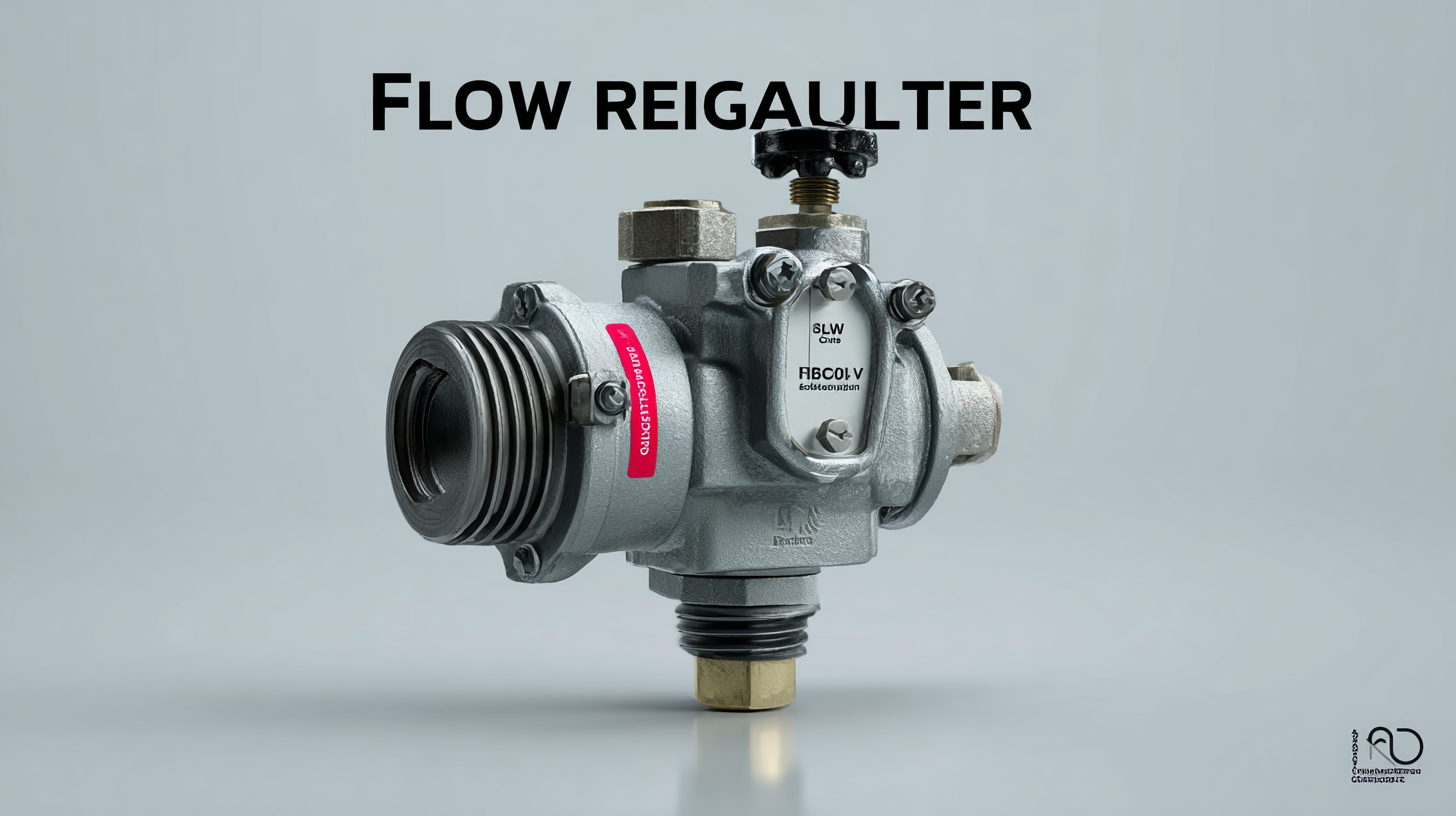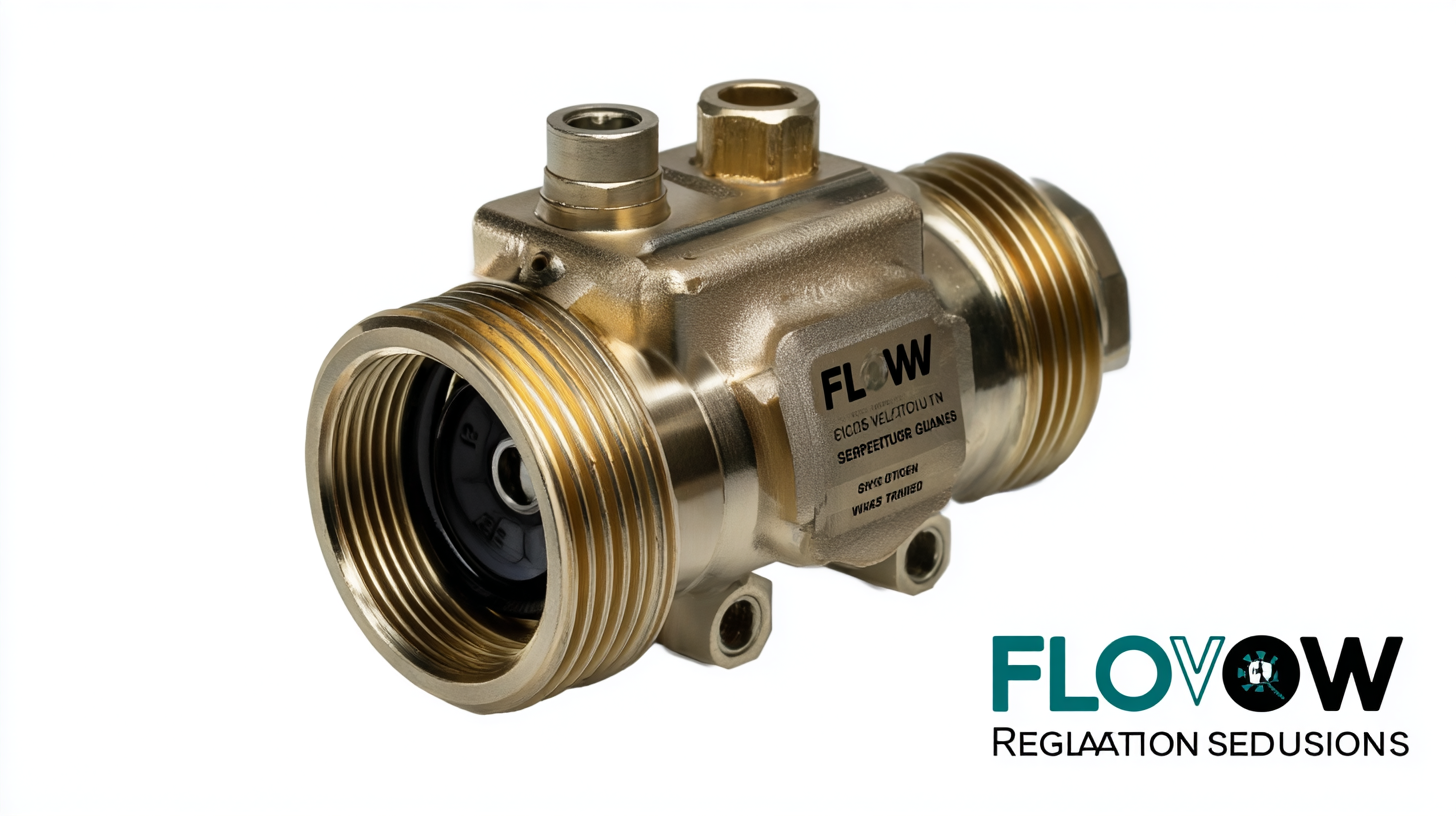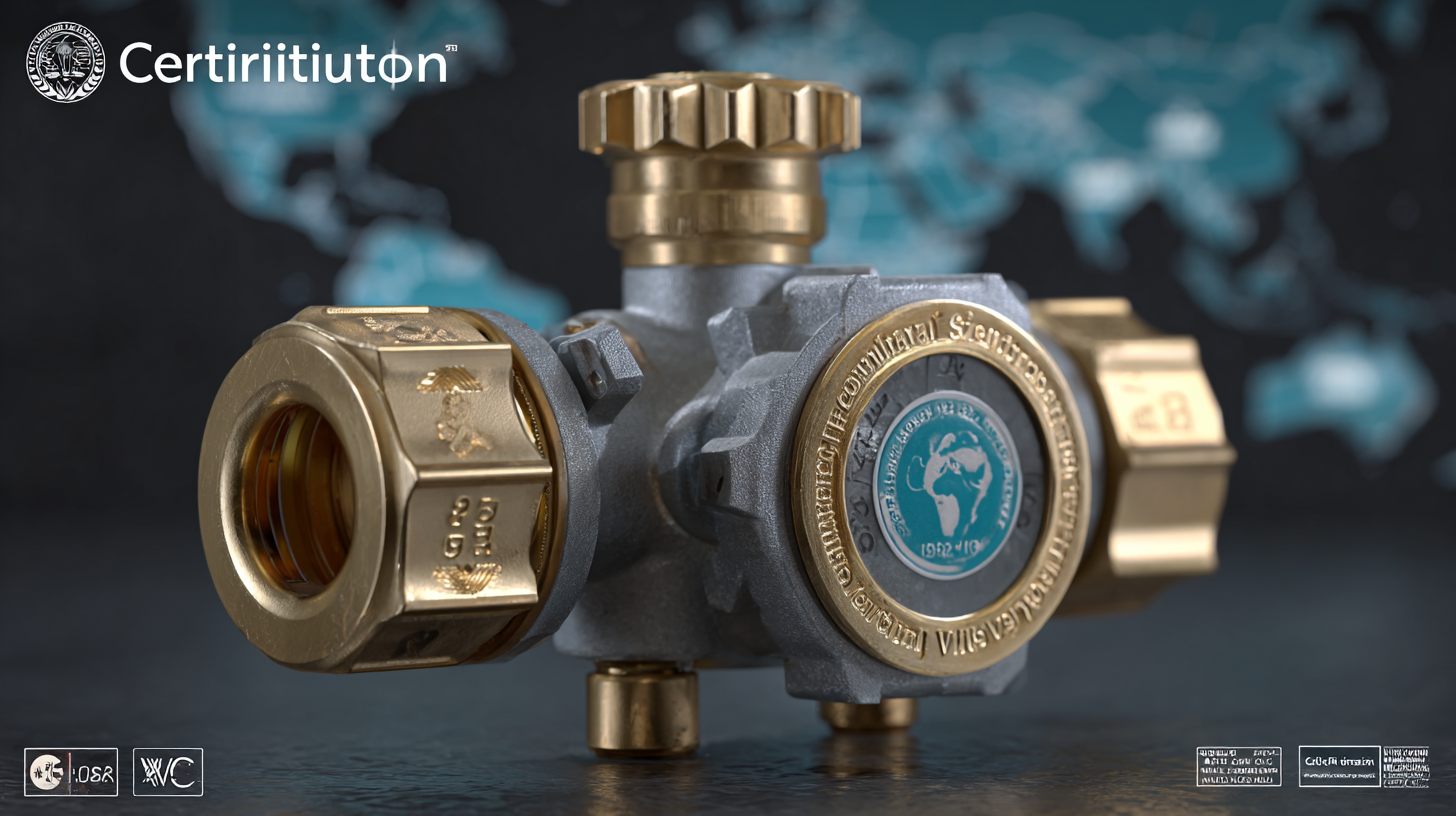Navigating Global Standards: The Impact of Import and Export Certifications on Best Flow Regulator Valve Supply Chains
 The global marketplace for Flow Regulator Valves is increasingly shaped by a complex web of import and export certifications, which play a crucial role in supply chain management. According to a report by Grand View Research, the global flow control market is expected to reach USD 24.10 billion by 2025, with a significant contribution from the flow regulator segment. These certifications not only ensure compliance with safety and quality standards but also influence trade dynamics and operational efficiencies. Businesses navigating these regulations face challenges that can impact time-to-market and overall competitiveness. As the demand for precision-engineered Flow Regulator Valves rises across sectors like pharmaceuticals, water treatment, and petrochemicals, understanding the implications of these global standards becomes essential for stakeholders aiming to optimize their supply chains effectively.
The global marketplace for Flow Regulator Valves is increasingly shaped by a complex web of import and export certifications, which play a crucial role in supply chain management. According to a report by Grand View Research, the global flow control market is expected to reach USD 24.10 billion by 2025, with a significant contribution from the flow regulator segment. These certifications not only ensure compliance with safety and quality standards but also influence trade dynamics and operational efficiencies. Businesses navigating these regulations face challenges that can impact time-to-market and overall competitiveness. As the demand for precision-engineered Flow Regulator Valves rises across sectors like pharmaceuticals, water treatment, and petrochemicals, understanding the implications of these global standards becomes essential for stakeholders aiming to optimize their supply chains effectively.
The Role of Import Certifications in Enhancing Flow Regulator Valve Supply Chain Efficiency
 In the realm of flow regulator valve supply chains, import certifications play a pivotal role in enhancing efficiency and ensuring compliance with international standards. These certifications affirm that products meet specific quality and safety requirements, facilitating smoother transactions across borders. By adhering to these standards, suppliers can mitigate risks associated with product recalls and enhance their reputation in the global market.
In the realm of flow regulator valve supply chains, import certifications play a pivotal role in enhancing efficiency and ensuring compliance with international standards. These certifications affirm that products meet specific quality and safety requirements, facilitating smoother transactions across borders. By adhering to these standards, suppliers can mitigate risks associated with product recalls and enhance their reputation in the global market.
Tip: Ensure that all flow regulator valve suppliers are well-versed in the import certification processes relevant to your industry. This proactive approach can streamline the procurement process, reducing delays and unexpected costs.
Furthermore, possessing the necessary import certifications can significantly improve collaboration among stakeholders within the supply chain. This shared commitment to quality standards fosters trust and transparency, ultimately resulting in better communication and less friction in the procurement process. By prioritizing certified products, companies can enhance their operational reliability and customer satisfaction.
Tip: Regularly monitor changes in import certification requirements, as they can evolve based on trade agreements or regulatory shifts. Keeping abreast of these changes helps maintain compliance and aids in strategic supply chain planning.
Understanding Export Standards and Their Effects on Global Valve Trade Dynamics
Understanding export standards is crucial for appreciating the dynamics of the global valve trade. As countries aim to ensure safety, efficiency, and environmental protection, they implement a range of export standards that manufacturers must adhere to. These standards can vary significantly from one country to another, affecting not only the technical specifications of flow regulator valves but also the regulatory compliance processes that companies must navigate. For manufacturers looking to enter or expand in international markets, understanding these diverse regulatory frameworks is essential to successfully launch their products.
Moreover, compliance with export standards can directly influence the competitiveness of valve suppliers. Businesses that effectively navigate these regulations stand to gain a stronger market position, as they can avoid hefty fines, product recalls, or export delays. In contrast, those that overlook or misinterpret pertinent standards may face significant setbacks. As a result, the ability to adapt to various certification requirements becomes a strategic asset in the global marketplace, shaping supply chain decisions and partnerships. This landscape not only impacts the flow regulator valve industry but also underscores the importance of collaboration between manufacturers, exporters, and regulatory bodies to streamline processes and enhance trade efficiency.
Analyzing Compliance Costs and Their Impact on Supply Chain Profitability in the Valve Industry
In the valve industry, compliance costs associated with import and export certifications play a critical role in shaping supply chain profitability. A recent report indicates that the global solenoid valve market is expected to reach USD 4.91 billion by 2025, growing at a CAGR of 4.5%. This growth is largely driven by increasing demand for regulatory compliance and the need for reliable valve systems in various industrial applications. However, as manufacturers strive to meet these compliance requirements, they often face rising costs that can erode profit margins.
The ongoing challenge of supply chain disruption has prompted a reevaluation of traditional manufacturing practices. Companies are prioritizing a resilient supply chain that balances cost efficiency with compliance. Research shows that restructuring supply bases and integrating advanced technologies, such as blockchain, can offer greater visibility and accuracy within the supply chain. By ensuring compliance while optimizing costs, manufacturers can enhance their competitiveness in an industry characterized by rapid change and increasing regulatory scrutiny.
Best Practices for Navigating Certification Processes in Flow Regulator Valve Procurement
Navigating the certification processes in flow regulator valve procurement is essential for businesses looking to optimize their supply chains. The global landscape is rife with various standards and regulations that can significantly impact the import and export of these critical components. Understanding the specific certifications required in target markets is the first step to ensure compliance and mitigate the risk of delays. Companies should invest time in researching the mandatory qualifications, which may include ISO certifications or industry-specific standards, to avoid pitfalls that can arise from insufficient compliance.

Once the relevant certifications are identified, developing a streamlined process for obtaining these approvals becomes paramount. Establishing strong relationships with certification bodies can expedite the review process, while continuous training for procurement teams on the latest regulations can enhance overall efficiency. It is also beneficial to create a checklist and a timeline for each certification process to maintain organization and transparency. By implementing these best practices, companies can not only navigate the complexities of certification but also cultivate a more resilient and responsive supply chain in the flow regulator valve market.
Future Trends in Global Standards: Innovations and Challenges for Valve Supply Chains
The landscape of valve supply chains is constantly evolving, driven by innovations in global standards and the ensuing challenges. As industries strive for greater efficiency and sustainability, the demand for advanced flow regulator valves has surged, prompting manufacturers to adopt cutting-edge technologies. This shift is not only facilitated by automation and digitalization but also influenced by the need to comply with stringent international certifications. As companies navigate these certifications, they must remain agile, incorporating best practices that respond to emerging regulations while maximizing operational efficiency.
Furthermore, the future of valve supply chains will likely see an increased focus on collaboration across borders. Innovations in supply chain transparency, such as blockchain technology, will enhance traceability and accountability, allowing key stakeholders to track products seamlessly from manufacturing to end-users. However, this journey is not without its hurdles. Companies must grapple with the complexities of varying regulations across different regions, which can disrupt supply chain consistency. As the industry adapts to these challenges, the ability to innovate while maintaining compliance will be crucial in ensuring resilience and competitiveness in the global market.
Navigating Global Standards: The Impact of Import and Export Certifications on Best Flow Regulator Valve Supply Chains
| Certification Type | Region | Impact on Supply Chain | Future Trends |
|---|---|---|---|
| ISO 9001 | Global | Improved quality assurance and customer satisfaction | Integration with digital quality management systems |
| CE Marking | European Union | Regulatory compliance for safety | Enhanced scrutiny of environmental impact |
| UL Certification | North America | Increased market access and consumer trust | Expansion of certification categories to include IoT |
| ROHS Compliance | European Union | Reduce hazardous materials in products | Stricter regulations on chemical usage |
| API Standards | Global | Enhanced operational safety and efficiency | Adoption of digital standards for real-time monitoring |
